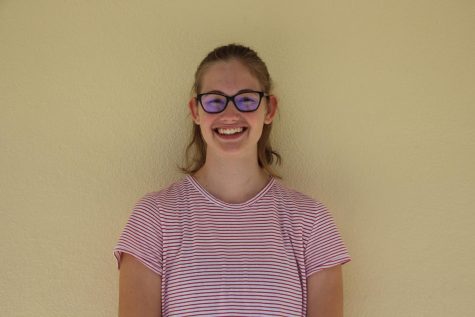Los Altos’ Niche Sports
November 16, 2017
Fencing: A ‘physical chess’
Fencing, in the words of senior Sriram Ramamurthy, is different than the sports usually found at Los Altos. It requires precision, extreme accuracy, calculated movements. Fencing focuses on deliberation and expertise instead of the pure strength of other endurance driven-sports.
“It’s an exercise for the mind as well as the body,” Sriram said. “A lot of people describe it as a physical chess.”
The basic premise to winning a fencing match is simple: aim for your opponent, strike. What makes it so hard is the incredibly restrictive guidelines on methods you are allowed to use to land a “touch.” There are three types of fencing — foil, épée and sabre — each aptly named after the weapons of varying weight used in the domain. In foil, for example, you are only allowed to aim for your opponent’s torso and hit them with the precise tip of your weapon. The real art of the sport is being tricky, finding quick and inventive ways to strike and landing strong blows. It’s a mind game.
Being a good fencer means training very specific skills, things that may seem minute to watchers but can mean the difference between winning and losing in the ring. Fencers mostly only practice for their specific type, since each requires different training.
“[Foil] has the lightest type of sword, so it requires a lot of speed,” junior Lucy Wang, who trains in foil, said. “For sabre, for example, you don’t really have to pace your steps, but the sword is like 10 times heavier. I can barely hold it.”
For Lucy, a week of training consists of a couple days at the gym, specifically working to strengthen her arms for a more powerful thrust. Once a week, she goes into her fencing club, Le Club Touché, and trains with other fencers in scrimmages, working to refine her tactics. There’s an emphasis on individual success, yet the fencers share bonds through the commonality of playing a rare sport.
When it comes to competing, fencing tournaments follow a similar structure to many other sports; there are elimination rounds and ultimately a final bracket.
Referees strictly enforce all touching rules, and modern-day fencing suits are equipped with touch sensors which respond only to the specifically targeted and positioned blows the domain allows. This, combined with the restrictive movements that are closely monitored, challenges fencers to maintain a level of precision not present in most other high school sports.
Squash: Coaching a Community
Besides being the two top squash players at Stanford squash, senior Shawn Avidan and sophomore Portia Pliam utilize their expertise, enthusiasm and communication skills to coach beginning players. They spend three hours each Sunday in and out of the four-walled squash courts at Stanford, helping newer players work toward mastering the game.
“[The beginning players] need a coach to walk out there and be really excited and keen to show them how to play, and [Shawn and Portia] really shine,” their coach Nick Albott said. “They can come in there and really inspire them to be better players and better people.”
Shawn and Portia’s dedication to coaching in addition to practicing exemplifies a common experience in the sport: a sense of community. Both the small number of people who play squash and the way practices are conducted nurtures this community and creates bonds despite competition.
“I met all these great people that I probably never would have met if it weren’t for squash,” Portia said. “We’ll play each other many times, but even though we want to win it’s still friendly.”
Shawn and Portia’s coaching strengthens this sense of community past players in their skill levels, and Portia wishes to give back to and grow the community that mentored her.
“I really enjoy helping people and helping kids,” Portia said. “I want to help them have fun playing squash and not just stress about winning and being the best.”
Shawn also helps players play for themselves, rather than being pressured by their parents. Parents recognize that being well-ranked in tournaments can help players get recruited to top colleges, and they can often be overly competitive on behalf of their child.
“The one thing I say and the one thing I always do when I play is I never look outside the court,” Shawn said. “I tell the kids ‘Don’t look at your parents in tournaments when you’re practicing. Just don’t.’”
This competitive energy comes out most in U.S. rank tournaments, where players earn ranks. Shawn played in a few when he was 13, but he soon quit because of the pressure-heavy environment. Now, prefers to compete in non-rank tournaments that encourage more friendly competition. But Portia, who participates in the tournaments, found the community of players persisted in these tournaments, despite the pressure from parents.
As part of giving back to the community — and representative of a growing trend of making squash more accessible — Portia also assists at Talbott’s squash program, Xtreme Squash. The program coaches kids from underserved neighborhoods and tutors them academically.
The Stanford Squash Club also aims to increase accessibility through building outdoor squash facilities to give the public a way to try out the sport, rather than having to go to country clubs or specific colleges where the courts reside now.
“What we’re trying to do out west here — and what they’ve done really well overseas — is trying to make squash more part of the public atmosphere,” Talbott said. “The goal is to get it big out west, and it’s just starting to blossom.”
Horseback Riding: Partners with a Purpose
Senior Rose William begins preparing for her show at 3 a.m., grooming her horse, braiding his hair and warming up in the ring before her first course at 7 a.m. With clean breeches and polished boots, Rose executed multiple memorized courses of jumps and other skills for judging.
“On show days specifically, everything has to be perfect,” Rose said. “Your horse has to be perfectly groomed, your saddle has to be on perfectly, your boots have to be shiny, your horse’s feet have to be groomed and polished… It takes a lot of time to get everything ready.”
After being exposed to horseback riding through summer camps when she was 5 years old, Rose grew to enjoy the sport. It transitioned from a summer activity to a year-round, almost daily passion.
But in her sophomore year, Rose stopped competing due to the overwhelming time commitment, and because competition fees can range from $2,000 to $3,000, requiring several expenses from transporting horses to providing food and bedding.
“A lot of the shows are during the school year and I just didn’t have time to stop school and go for a week to do a show,” Rose said.
While Rose has wound down from the competitive aspect of horseback riding, junior Jen Rosen trains four times a week in the hopes of qualifying for championships next fall. As practices become more draining and time-consuming, Jen finds motivation through both competition and self-improvement.
“I want to kick ass and beat everyone when I go,” Jen said. “I’m just thinking about my next test and [who] I can beat…That’s mostly what I’m focusing on: what did I do wrong in my last ride? Even though it’s exhausting, you’re mostly focused on your test, you’re mostly focused on how you can improve throughout the show.”
With almost four years of experience, Jen hopes to improve her technical skills and master more difficult dressage movements in preparation for competitions.
“You get a lot more challenging movements [and] it starts to look a lot more like your horse is dancing,” Jen said. “I’m not there yet because that’s a very high level, but it keeps going up [and] it looks more like dancing.”
Though Jen pushes herself to succeed during the season, she does remind herself of the non-competitive aspect of horseback riding and the reason why she initially chose to pursue the sport: her connection to her horse.
“I do get into those points where [I think] ‘This is for competing’ and it gets very stressful because when I get into that mindset [I think] ‘Why am I even riding?’ but it’s [because] I love it and I love being with the horses,” Jen said. “It’s mostly that but when it gets to competition season it’s really challenging not to see the other aspect of it.”
Similarly, Rose also marks her improvement through a less competitive lens. Now that she practices less frequently, primarily during school breaks, she finds more value in her relationship with her horse than competing.
“Now that I don’t compete as much, I base my milestones on how my horse’s training is progressing… and how we do together during lessons,” Rose said. “My horse always comes first for me because to take care of a horse, there’s a lot that goes into it: food, veterinary needs, and just how I get my horse ready for lessons… Your horse is your partner and if you don’t take care of their needs then you’re missing out on a large aspect of what that partnership is.”







